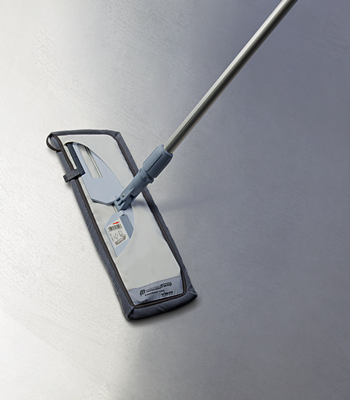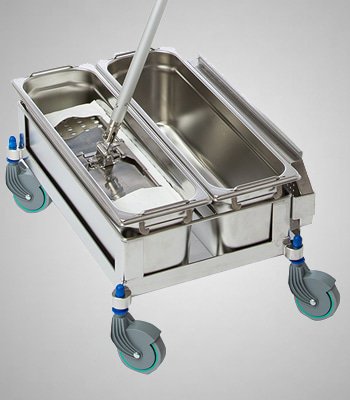7 IMPORTANT WAYS TO PREVENT CLEANROOM CONTAMINATION
Cleanrooms are designed to stay sanitary and free of contaminants (such as dust or microorganisms), often using complex air-flow systems and precautionary measures. They are found in various industries, whether this be pharmaceutical, healthcare, research, electronics or chemosafety.
Since many staff working in these cleanrooms are constantly exposed to sensitive equipment and potentially harmful chemical substances, eliminating contaminants is essential to avoid the spread of illnesses and infection.
Unsurprisingly, employees make up the biggest source of contamination (80%). Luckily, these dangers can be minimised through simple cleanroom methods, garments and equipment.
1. Cleanroom Garments
Maintaining a clean, sanitary environment involves wearing protective cleanroom garments. Not only do they protect you from potentially harmful chemicals, cleanroom garments also protect the overall environment and the manufactured product from being contaminated.
Cleanroom garments are designed for maximum control of particulate and microbial contamination, providing coverage in the most critical fields. This can include hooded barrier coveralls which protect operators from hazardous powders and solutions, and barrier gowns which are usually worn for the administration of cytotoxic drugs and patient care. For less critical cleanroom areas, pocket coveralls and cleanroom smocks are processed as Low Bioburden (LBB) in our processing facility.
2. Masks & Respirators
In any sterile cleanroom, it is important for staff to wear specific masks and respirators. They are an essential component of cleanroom apparel which is needed to reduce the transfer of particulate and microbial contamination that has been exhaled by the operator into the surrounding environment.
Clean Room Garments offers a comprehensive range of sterile face masks which all feature high particulate and bacterial filtration efficient. These latex-free and low linting face masks have several advantageous features such as low particle shedding, excellent breathability, strong seams and ultrasonic sealing.
Alternatively, respirators can be used to minimise contamination. They are designed for effective and comfortable protection against a combination of cleanroom hazards – organic or inorganic vapours, acid gas and particulate hazards. The textured face seal minimises slippage and enhances comfort for the user, while offering maximum protection until the filters become saturated.
3. Protective Headwear
It is often easy to forget that uncovered heads or hair can cause contamination in the workplace cleanroom. To retain skin flakes and hair, headwear protection is important for contamination control. This also includes beard coverings and even cleanroom googles, which have several functions including an anti-fog system, optically correct toughened lenses and ventilation systems.
4. Footwear and Overshoes
Wearing protective footwear and overshoes is an absolute must for any cleanroom environment. There are bound to be chemical spills, dust or grime, or hazardous substances on the floor, which can cause numerous health risks and injuries. Overshoes can be used for many different industries such as the pharmaceutical, hospital and food industry.
By wearing protective footwear and overshoes, you can minimise risks from physical accidents such as slipping and falling, as well as contamination. Clean Room Garments offers different designs and models, such as non-slip polyester shoecovers or disposable shoecovers, for high protection against penetration by dust and liquid splash.
5. Hand Hygiene & Gloves
For any cleanroom and work environment, hand washing is extremely important to fight germs and bacterial infection. Hand hygiene is a huge priority for contamination control as our bare hands often come into contact with grimy surfaces or dangerous microbes and transfer them.
Hand hygiene can be reinforced supplying hand sanitisers and wipes in common areas. Proper hand hygiene doesn’t simply mean hand-washing – it also means drying your hands in the right way. Germs can spread more quickly if wet hands make contact.
Another way to minimise contamination is to wear cleanroom gloves. Clean Room Garments offers an extensive range of sterile and non-sterile gloves which provide extreme comfort, strength and tactility. There are varying glove lengths for different levels of protection, with a wide variety of materials to suit business preferences.
6. Cleaning Equipment & Disinfectants
Using the proper cleaning equipment is essential to preventing cleanroom contamination. This includes regularly using a range of high-quality cleaning products and professional cleaning services to effectively eradicate particulate or microbial control.
Cleanrooms should contain a diverse array of cleaning equipment ranging from mopping product systems (buckets and trolleys), wall washing systems, chlorine sprays, detergents, wipes and swabs. Disinfectants are also one of the most powerful ways to eliminate viruses and microbes. Unlike antiseptics, disinfectants actually destroy the production and growth of various microorganisms.
7. Establishing Cleanroom Hygiene Practices
The key to preventing contamination lies in a system-wide policy implementation. All workplaces should encourage suitable cleanroom protocols and methods. Here are some great ones to keep in mind:
- Wear cleanroom garments properly – Since garments are influenced by the pull of gravity, it is important that you wear your garments properly following any ‘donning’ procedures if applicable, this will prevent contaminants from falling on clean areas of the garment.
- Designate cleanroom only supplies – Enforcing specific cleanroom protocols is a great way to make sure that supplies and equipment remain contaminant-free. By ensuring that certain supplies stay within the confines of the cleanroom, workplaces can stop the transfer of germs and particles.
- Moving slowly – Rapid movement can cause more germs and particles to be shed in the cleanroom. Workers should move slowly and deliberately to their works stations, while exiting or entering cleanrooms in a similar way. This also prevents any slipping accidents and injuries.
Contamination should be prevented in cleanrooms at all costs.
Why take the risk when Clean Room Garments can help your business remain contaminant-free in all operations? With our specialised products and services, our mission is to provide quality solutions and technical expertise for controlled environments and personal protection.
We are committed to developing cleanroom supplies that meet your individual business contamination needs and broader compliance standards.







